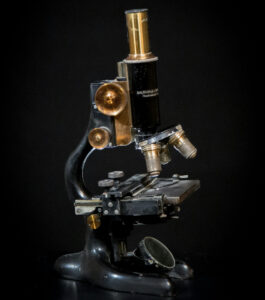The Ins and Outs of Sperm Freezing

Given the burgeoning popularity of egg and sperm freezing, you might think that this is new technology that quickly hit its stride. Although true with eggs, sperm freezing techniques developed even before the United States was born. It all started with Anton van Leeuwenhoek, the Dutch father of microbiology, who invented the compound microscope in 1677 and months later cast his magnified eye into his own semen. To his surprise, quite unlike the mites and bacteria that he first described, he found moving sperm dancing wildly within this sexual fluid and called them “animalcules.” One hundred years later, the Italian scientist Lazzaro Spallanzani cooled (someone’s) sperm by putting them in snow and watched them become still and then regain motion after thawing. Some two hundred years later, the first human birth using frozen sperm was reported in 1953 by Dr. Jerome K. Sherman and the first sperm bank opened in 1964 — sixty years ago! So goes the storied history of sperm banking.
Why Freeze?
There are lots of reasons to freeze your fellows. Here are the most common ones:
- You have a medical condition, or you’re facing medical treatment, that may affect your future fertility.
- You are having a vasectomy and want sperm available if you change your mind about having children.
- The quality of your sperm is deteriorating or you are worried about how it may deteriorate with age.
- You have difficulty producing semen samples “on demand” for fertility treatment.
- You are at risk of injury or death in your occupation (e.g. military deployment)
- If you’re transitioning to female, you could preserve your fertility before hormone therapy or reconstructive surgery.
Fun Sperm Freezing Facts
Although they are robustly made, compact machines with a mission, it is even more remarkable how sperm can survive the freeze-thaw process and come out fighting again.
- Using frozen sperm is just as successful as using fresh sperm with assisted reproduction.
- There are no risks from using frozen sperm for conception.
- Not all sperm survive the freezing and thawing process. Typically, 50% make it through this intact.
- Sperm can be frozen for 20 years or more. In fact, births have been reported after sperm was stored for 40 years!
- Low temperature storage in liquid nitrogen (-196 °C, a bit colder than the surface of Saturn) can maintain cells almost indefinitely because chemical reactions that require molecular motion do not occur at this low a temperature.
How Does it Work?
Since the idea behind freezing sperm is to eventually use it for a pregnancy, the FDA requires sexually transmitted disease testing of all sperm donors to protect the eventual recipients. HIV, hepatitis, and syphilis are the kinds of testing needed. Written, informed consent to allow your sperm to be stored then follows. Make sure you specify how long you’d like for the storage to continue and consider what you would like done with the sperm (dispose of, donate to partner, donate to science) in case of unforeseen circumstances in which you are unable to decide its fate. At this point, you will need to pay to open a “bank account” for sperm storage.
You’ll be asked to produce a fresh semen sample which should be done with 2-4 days of prior sexual abstinence. The fluid will be mixed with a special fluid (cryoprotectant) usually made of egg yolks to protect the sperm from damage during freezing and thawing. This mixed semen sample is then divided into several containers or “straws” for freezing. The samples are then slowly cooled and plunged into liquid nitrogen for storage.
The Good Stuff
If you’re wondering how much sperm to freeze, consider this a fertility insurance policy: you can certainly get a lot of coverage, but also think more about the minimal amount you might need. Typically, a normal semen sample can provide enough sperm for 2-3 intrauterine insemination (IUI) treatments to conceive. And, for each child, one should plan to do 4-6 IUIs. That means that you should bank 2-3 ejaculates for each desired child.
I also advise my patients to freeze “good” sperm. What that means is that for 1-2 month before you plan to bank sperm, clean up your health by stopping tobacco and alcohol, staying out of hot baths and tubs, eating and sleeping well, and reducing stress. I also encourage men to take a hearty antioxidant and multivitamin supplement (e.g., AlphaSperm.com) to balance out their typical airport food-based diets. In this way, you can put your best food forward and freeze the best possible sperm you can. In the words of Angel Moeira: “You are a winner before the day you were born. So, continue to win with life.”









